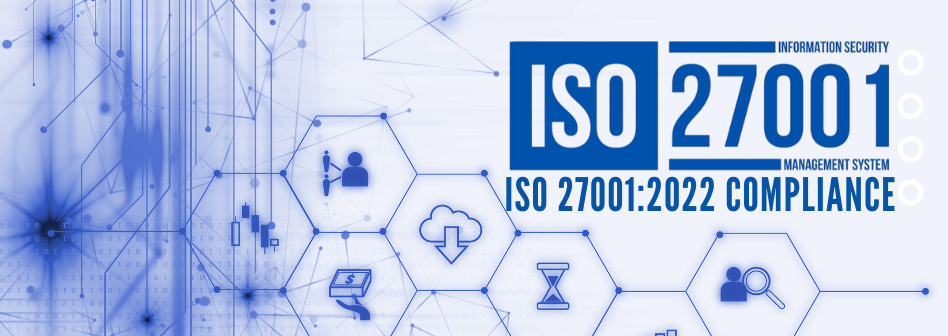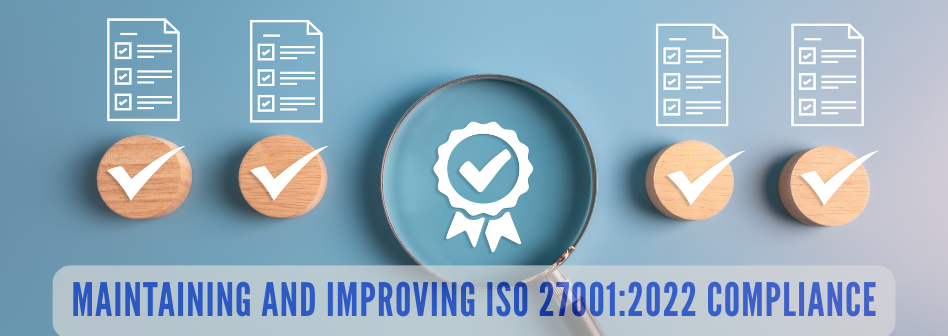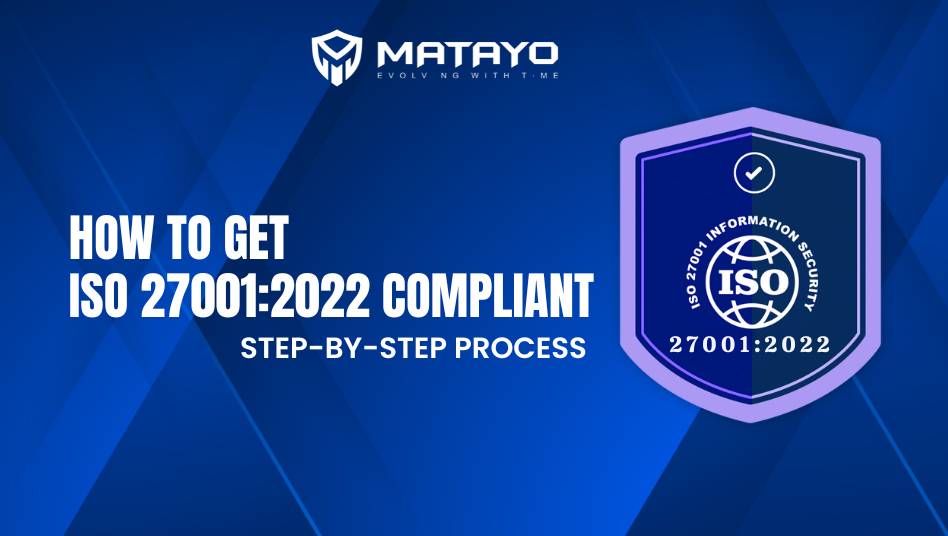In the modern cyberspace environment, it is necessary to develop an ISMS in accordance with ISO/IEC 27001:2022 to organize risk management. The 2022 edition polishes requirements and controls- reducing Annex A from 114 to 93 controls, rearranged in four domains, and new controls such as threat intelligence, cloud security and secure development practices have been added. This article explains a clear, technical, and non-redundant roadmap to meeting compliance in brief and systematic steps in which you start with the gap analysis and proceed to audit and constant improvement, you will have the overall blueprint of the process of implementing ISMS that is both current with the standard and sets your organization on the path of future effectiveness in security terms. An experienced ISO 27001 Consultant can help simplify these steps and ensure organizations avoid common pitfalls.
Understanding ISO 27001:2022 Compliance
The ISO/IEC 27001:2022 has the same structure as the ISMS as requirements to implement information security in the organization are advised by the standard, requiring establishment, implementation, maintenance, and enhancement of the information security within the organization. It has developed in response to the most recent cybersecurity problems, with controls simplified and reorganized. Annex A has been restructured and streamlined into four areas, including organizational, people, physical, and technological controls and brought down to 93 controls, dropping outdated controls and adding 11 new controls that cover more current threats, such as cloud security, threat intelligence, data masking, and secure software development. Many organizations also rely on professional ISO 27001 Consulting Services to ensure these updated controls are implemented efficiently.

The ISO 27001: 2022 is in line with the updated harmonized format of the standards of the management system which is the ISO management system to facilitate improved integration, auditability and governance. Important provisions (e.g., the 5.3 provision on roles and responsibilities and the 7.4 provision on communication) have been further elaborated; the 9.2 provision (internal audit) and the 9.3 provision (management review) have been further broken down to be better assessed in terms of performance.
Organizations that are certified to the 2013 standard have until October 31, 2025, to upgrade to the 2022 version or their certification will expire. General compliance now demands a risk-based ISMS architecture that is supplemented by new domain controls, aided by more defined leadership positions and enhanced documentation. For smaller companies and ISO 27001 for Startups, this transition is particularly important, as it allows them to build a scalable, security-first foundation early in their growth.
Step-by-Step Process to Achieve ISO 27001:2022 Compliance
The following are the systematic measures that organizations should take to be in line with ISO 27001:2022 requirements. The stages are sequential and one stage is developed based on the previous one which guarantees the gradual transition between the initial assessment and the certification and the long-term enhancement of the ISMS.

Step 1 – Conduct a Gap Analysis and Risk Assessment
Begin with a gap analysis: compare your current ISMS and security posture to the ISO 27001: 2022 requirements clauses 4 through 10 and clauses 4 through 10 in the updated clone set in Annex A (93 controls). Write up in the form of yes/no questions, evaluate nonconformities, flex responsibilities, and prioritize remediation. Subsequently, conduct a risk analysis, which comprises defining your methodology (qualitative/quantitative), listing assets, threats, vulnerabilities, probability as well as impact in line with clause 6.1.2. Separate the two: gap analysis to identify compliance that is not in place, and risk assessment to establish which controls to use based on the risk exposure.
Step 2 – Define the ISMS Scope and Policy
Scopes should be defined in depth: specify pertinent organizational units, information resources, IT systems, and geographic locations. Next write an ISMS policy: a technical-level statement of governance structure, risk posture, objectives, and required compliance. It is to be in line with clause 5 (leadership, policy) and clause 6 (planning) requirements.
Step 3 – Secure Top Management Commitment
The leadership should also have the ability to set clear security objectives in line with business objectives, whereby the issue of information security becomes integrated into the business strategic decisions. Top-level review regularly, budget allocation and clear assignment of accountability are necessities to comply with the governance requirements of clause 5.1. This observable dedication leads to organizational-wide production and reduces opposition to ISMS efforts.
Step 4 – Create a Risk Treatment Plan and Statement of Applicability (SoA)
Prepare an organized Risk Treatment Plan (RTP) showing control treatment options avoidance, reduction, sharing, or acceptance of each material risk, and identify owners, schedule, and resources. At the same time, prepare a Statement of Applicability (SoA) that lists all controls contained in Annex A (93 current in 2022), which ones are put into effect and which ones are not, and explain why some controls have been excluded based on a risk assessment.
Step 5 – Implement Security Controls and Procedures
Implement selected controls across four domains:
- Organizational controls: governance, supplier management, threat intelligence (new control), cloud security (new control).
- People controls: roles, awareness, secure development training.
- Physical controls: access restrictions, monitoring, and continuity readiness.
- Technological controls: encryption, intrusion detection, data masking, configuration management, data deletion, DLP, web filtering, activity monitoring, secure coding, aligned with the new Annex A control.
Implement every control in operational procedure and document/audit traceable.

Step 6 – Train Employees and Build Awareness
Establish a systematic awareness initiative about new controls and risk priorities. Include technical training on security threats, system configuration standards, secure coding practices, DLP mechanisms, and incident response workflows. Periodic and role-based training needs to make sure that the technical personnel are familiar with control implementation and maintenance as part of their daily operations.
Step 7 – Document ISMS Policies and Procedures
The documentation should also meet the clause 7.5 mandates on documented information, and therefore the availability, loss protection, and controlled access. The records of ownership and approval of each document must be clear to prove accountability. Document management systems that are automated can ease version management and audit tracking. Essentially, properly documented documentation can be the sole source of truth in the operations and compliance of ISMS.
Step 8 – Monitor, Measure, and Evaluate Performance
Assessment must not merely monitor compliance measures, but must also gauge the business impact, e.g. downtime saved as a result of better incident response or risk reduction expressed as a percentage of vulnerability remediation. Performance outcomes shall be assessed at specific times and initiate corrective or preventative measures within clause 10.2. When organizations direct metrics at risk treatment goals, a closed feedback loop is established that will help keep the ISMS continuously optimized.
Step 9 – Conduct Internal Audits and Management Review
Perform internal audits against ISO 27001:2022 requirements and document non-conformities. The evaluation checklists which should be used by the auditors are clause-based and control-based. The management review (clause 9.3.1 9.3.3) follows, in which the leader reviews the suitability, effectiveness and possible improvements in the ISMS, and authorizes corrective measures and changes.
Step 10 – Engage an Accredited Certification Body and Pass the Audit
Choose a certification body that is accredited with ISO / IEC 27001:2022. The certification process is comprised of:
- Stage 1 (documentation review): assess scope, policy, SoA, RTP.
- Stage 2 (on-site audit): verify evidence of implementation, employee competence, and control operability.
A successful audit results in ISO 27001 certification valid for three years, with annual surveillance audits.
Step 11 – Maintain and Continuously Improve Compliance
Take up the Plan-Do-Check-Act cycle. Re-establish risk measures as threats arise. Review the RTP and SoA every year or in case of any change. Refresh training programs, control frameworks, and documentation. Apply surveillance audit feedback, internal audit findings to guide continuous improvements and keep your ISMS abreast with changing security environments and organizational conditions.
Maintaining and Improving ISO 27001:2022 Compliance
Sustaining ISO 27001 compliance involves integrating the workflow of ISMS processes into the process, and not viewing them as a project deliverable. Keep assessing and updating risk assessments and controls based on new threats that arise daily, including advanced persistent threats, cloud vulnerabilities, or a supply-chain threat.

Maintain training and awareness as living components. Periodically conduct practical technical drills (e.g. simulated incident response, vulnerability testing, train secure code) to ensure that the staff retain the most significant behaviours.
Find dynamically the inefficiencies, the non-conformities and drift in controls through exploiting periodical internal audits and management reviews. See audit results as growth opportunities, not failures, as incentives to corrective action. Integrate your ISMS with other similar standards (including ISO 9001 or ISO 22301) to have efficient governance and operation.
Maintain regulatory and technological updates (e.g., GDPR expansion, NIS 2, DORA) to be able to actively follow up with more broadly focused security or privacy needs in your ISMS. It is possible to view compliance as a dynamic capability in your organization in such a way that it is resilient, compliant with regulations and trusted by stakeholders over the long term.
Conclusion
To achieve the goal of ISO 27001:2022 compliance, the process is structured and technical, involving gap analysis and the implementation of risk-based controls for certification and ongoing growth. This is built through deep integration of these processes into your ISMS and results in resilient progressive security. Matayo’s ISO 27001 Compliance Services make the process easier with clear guidance and practical methods.


